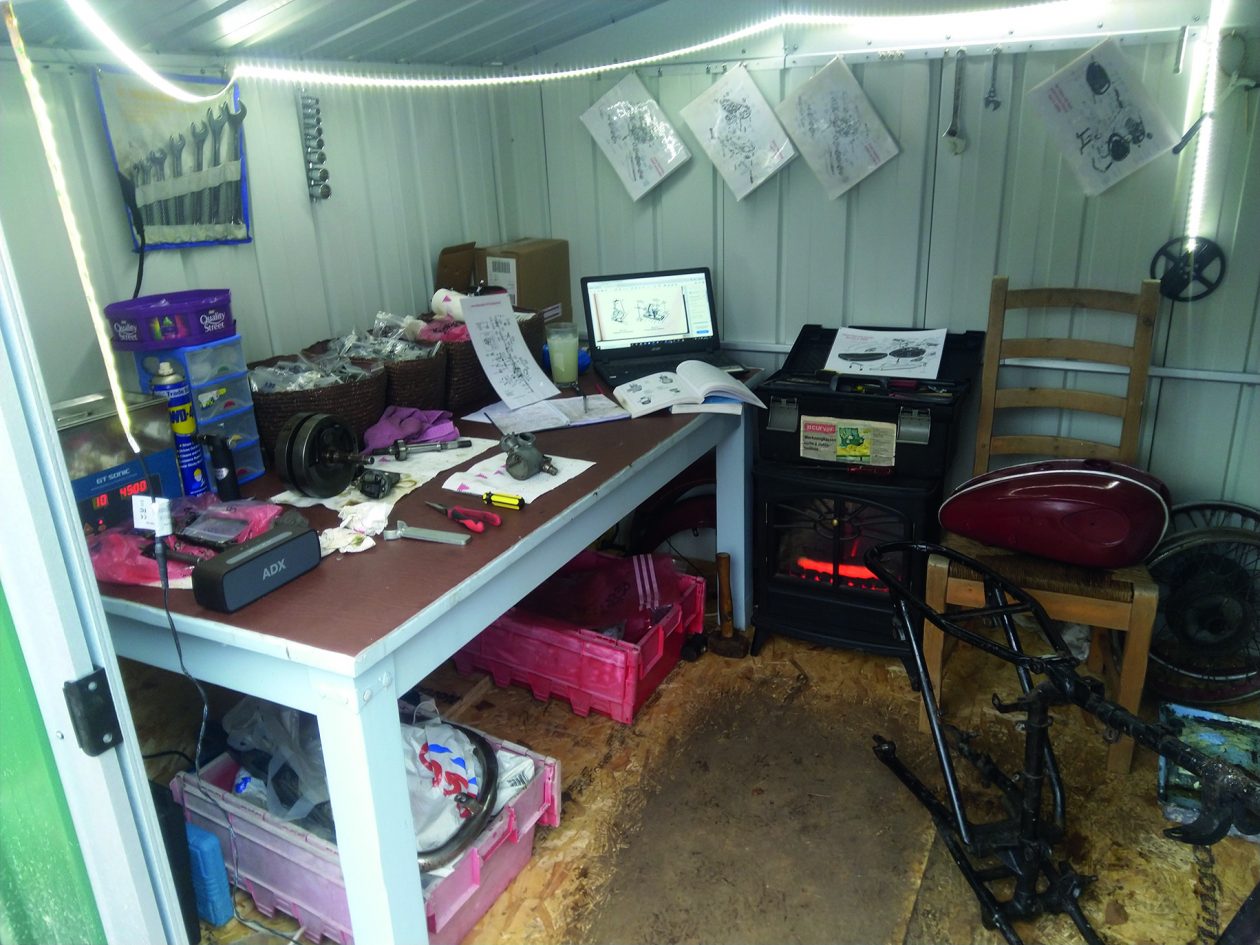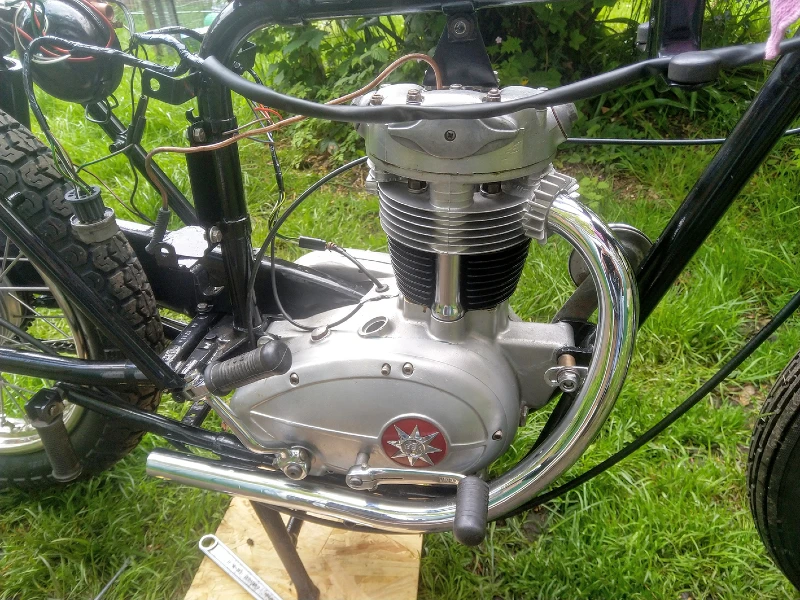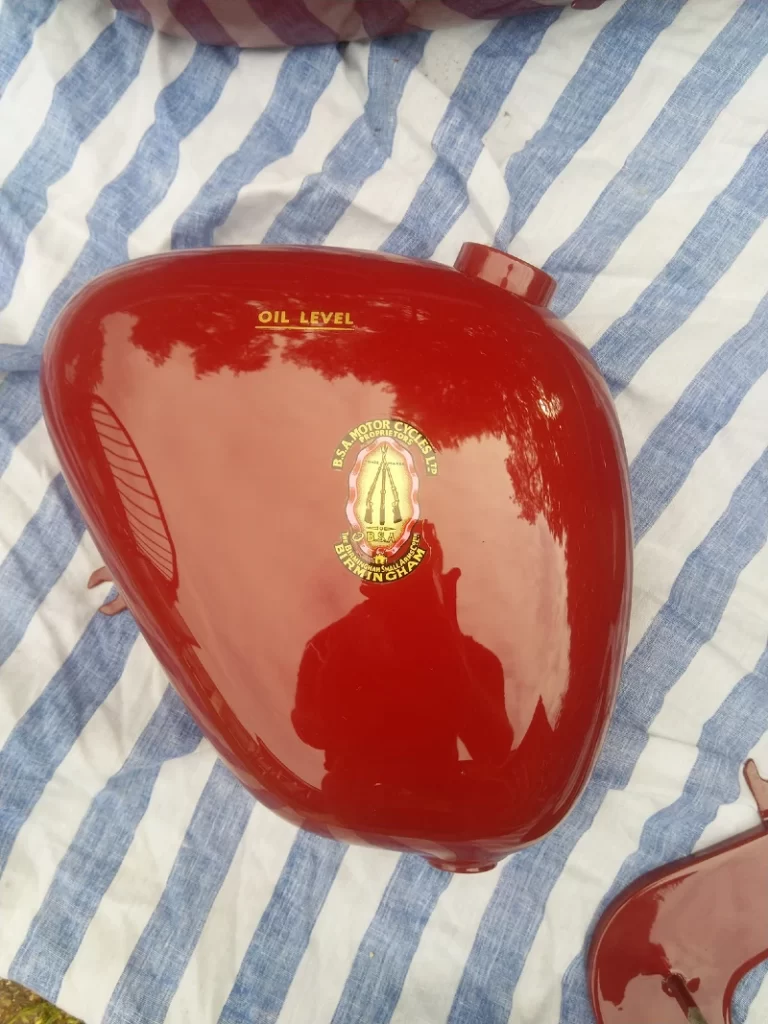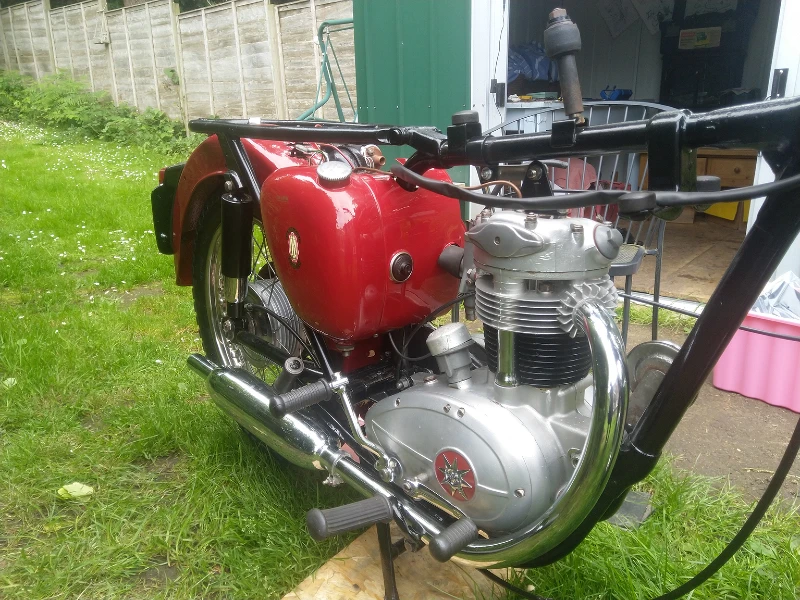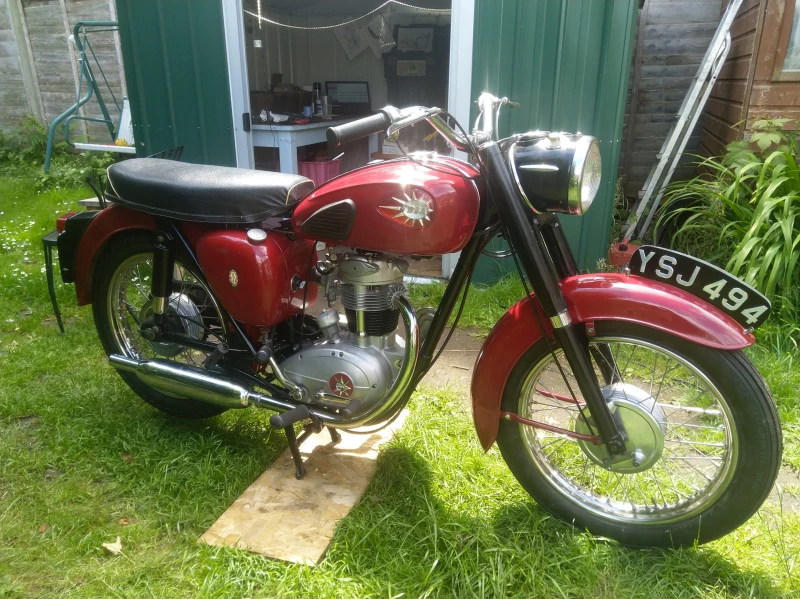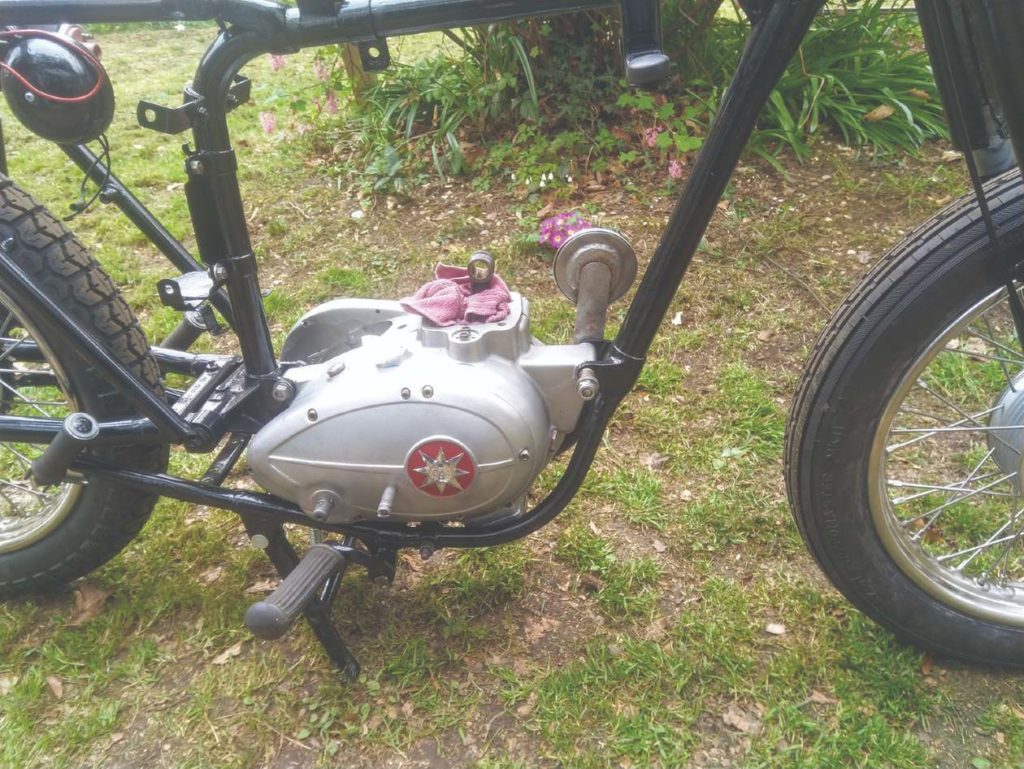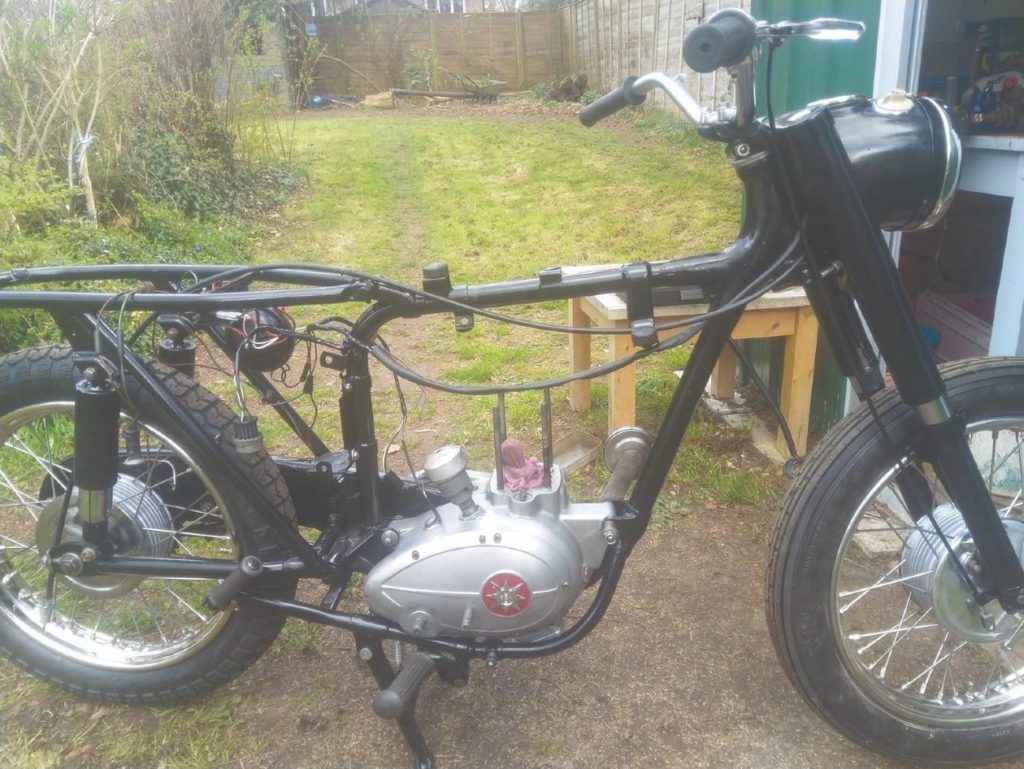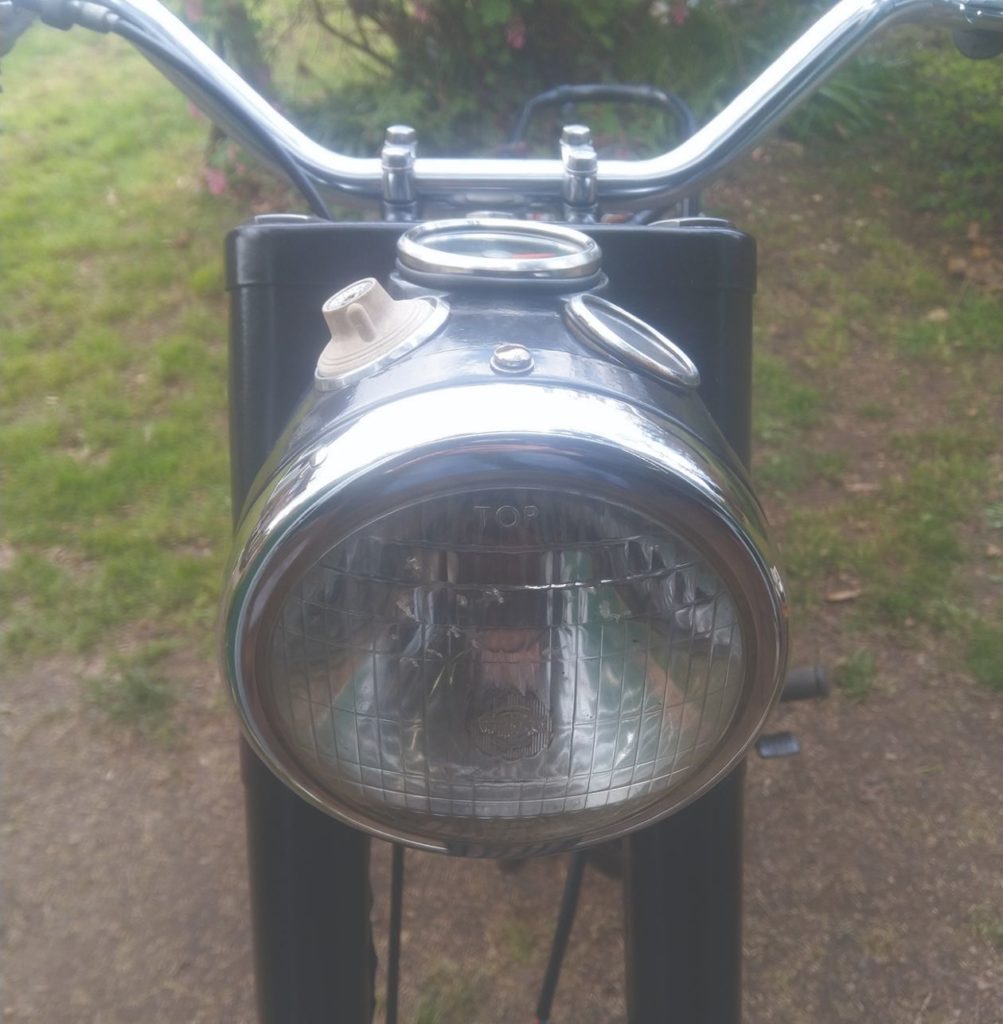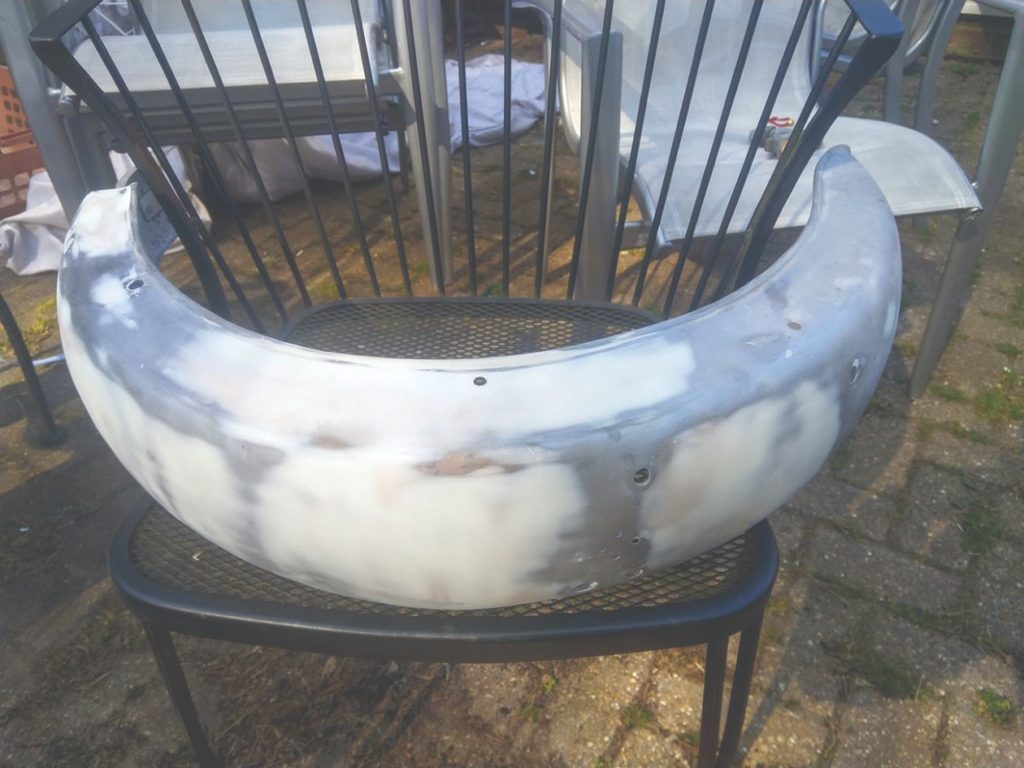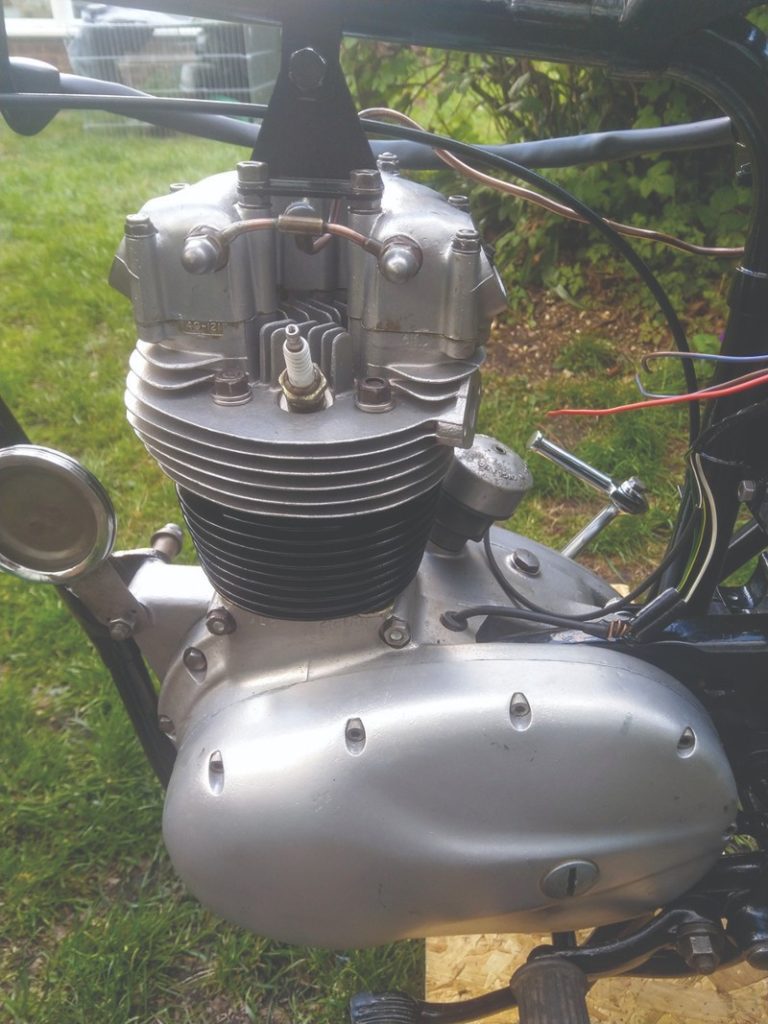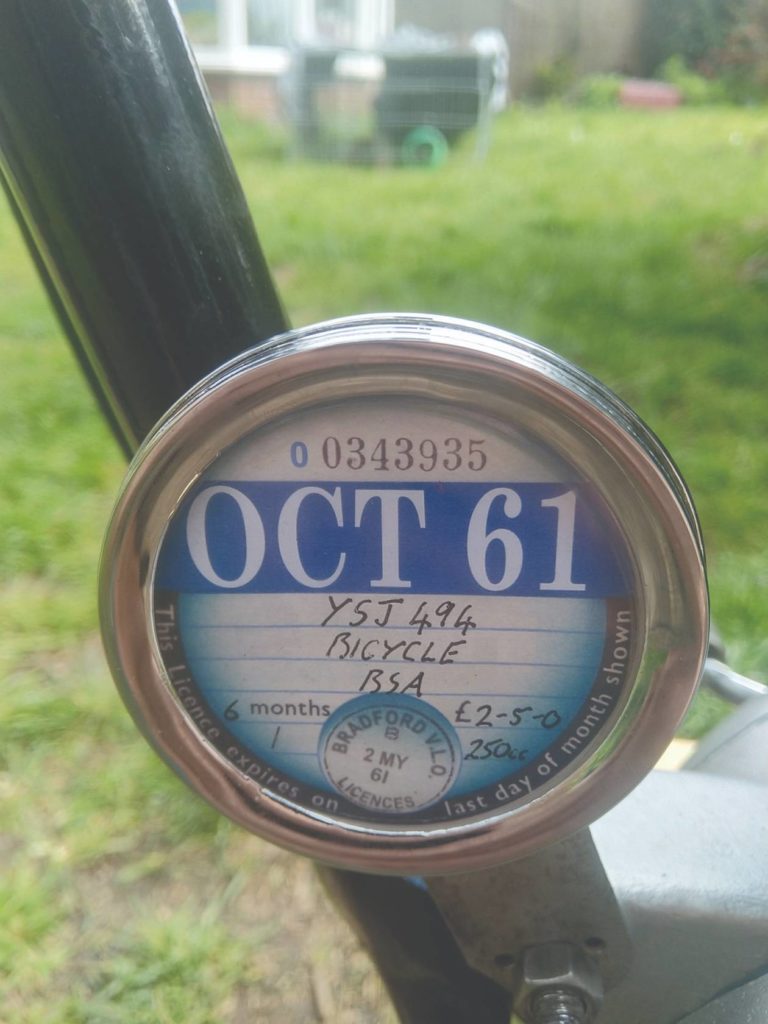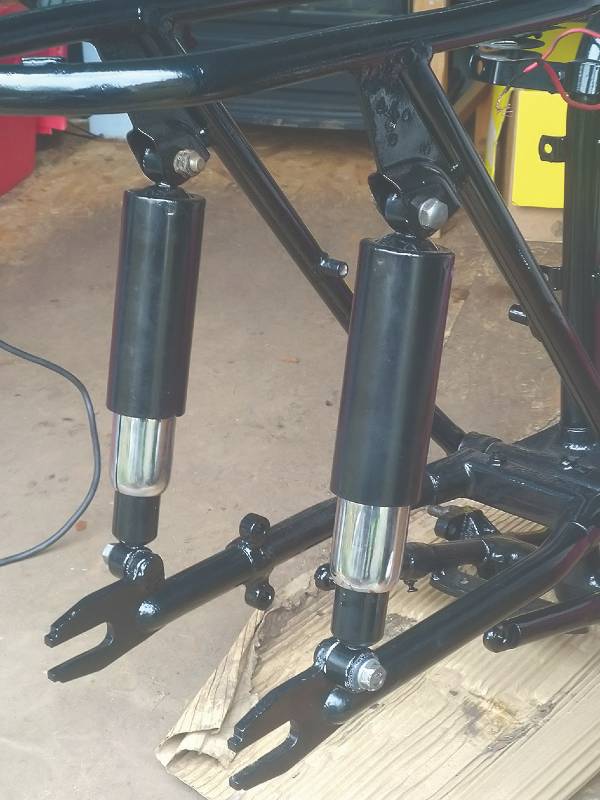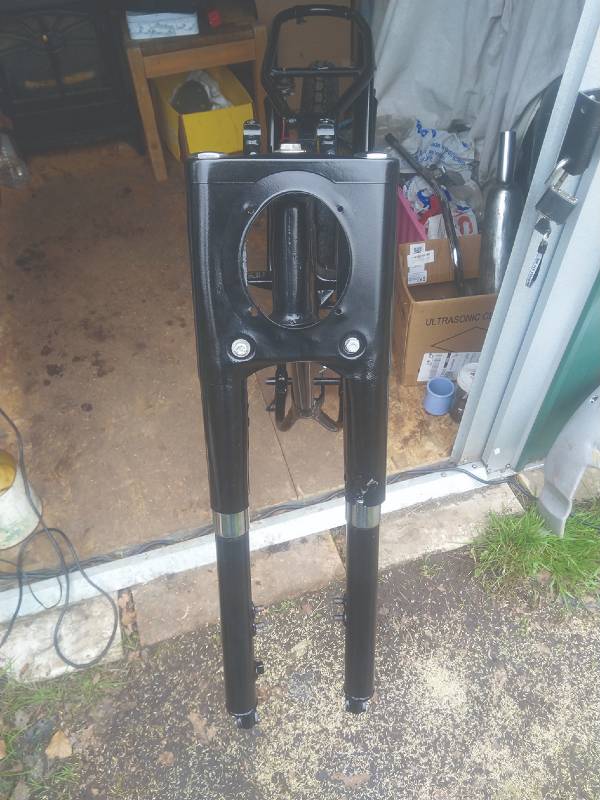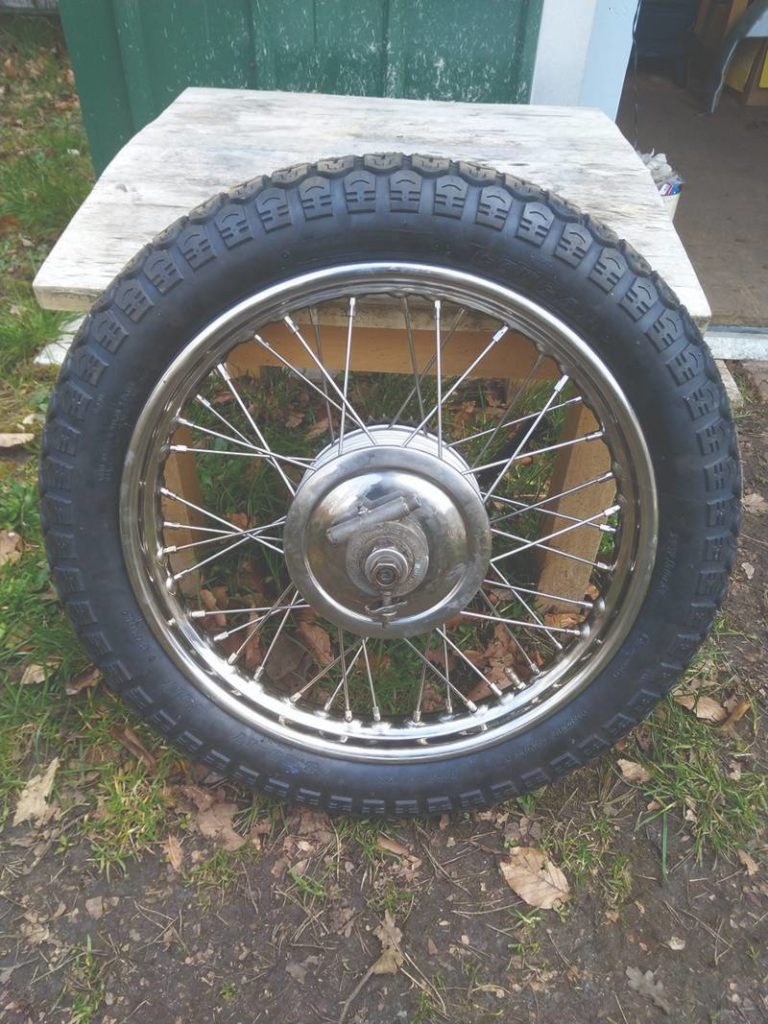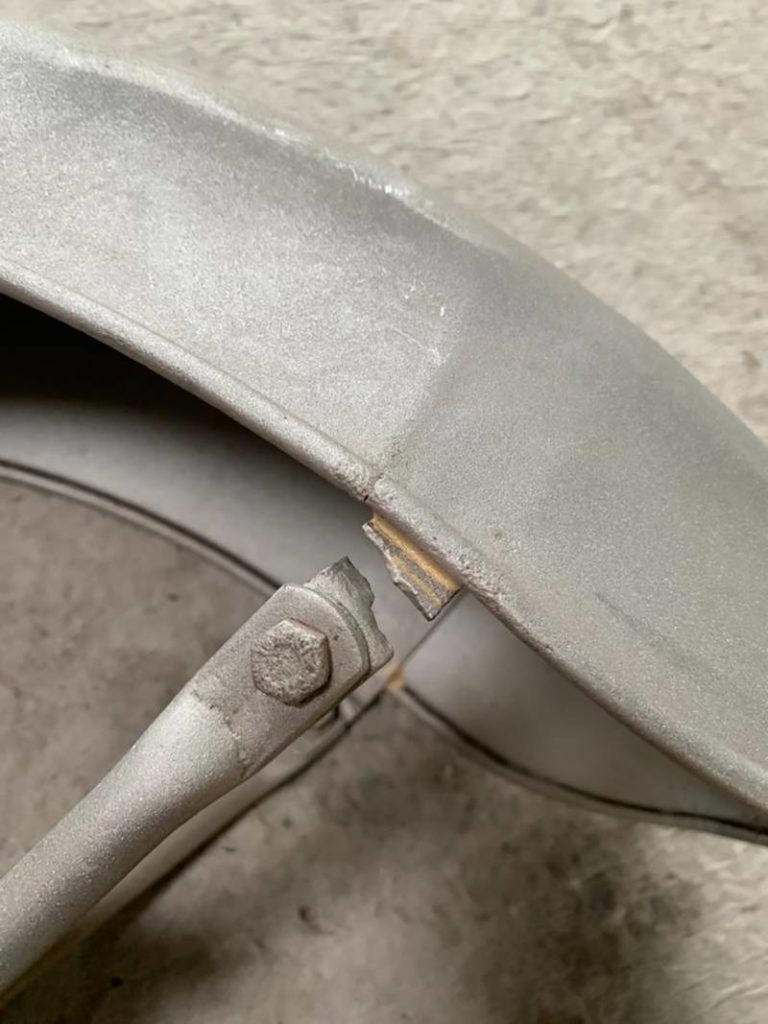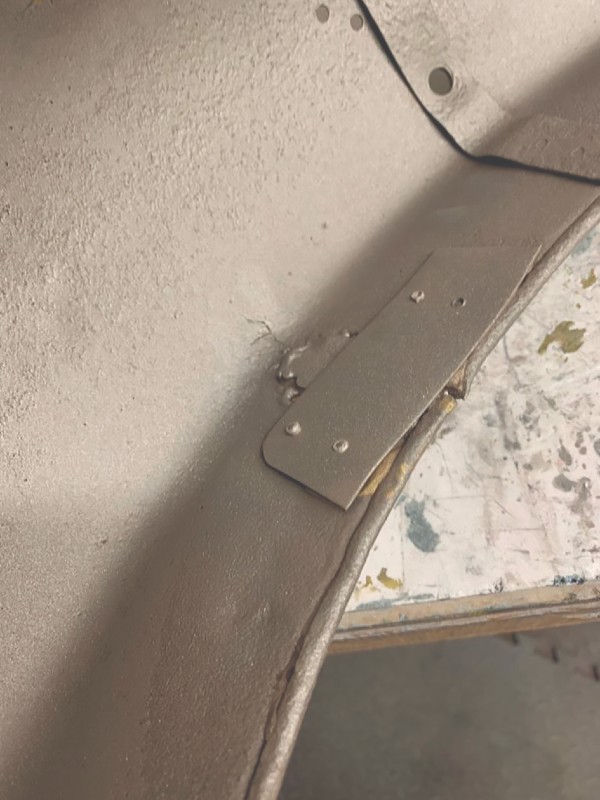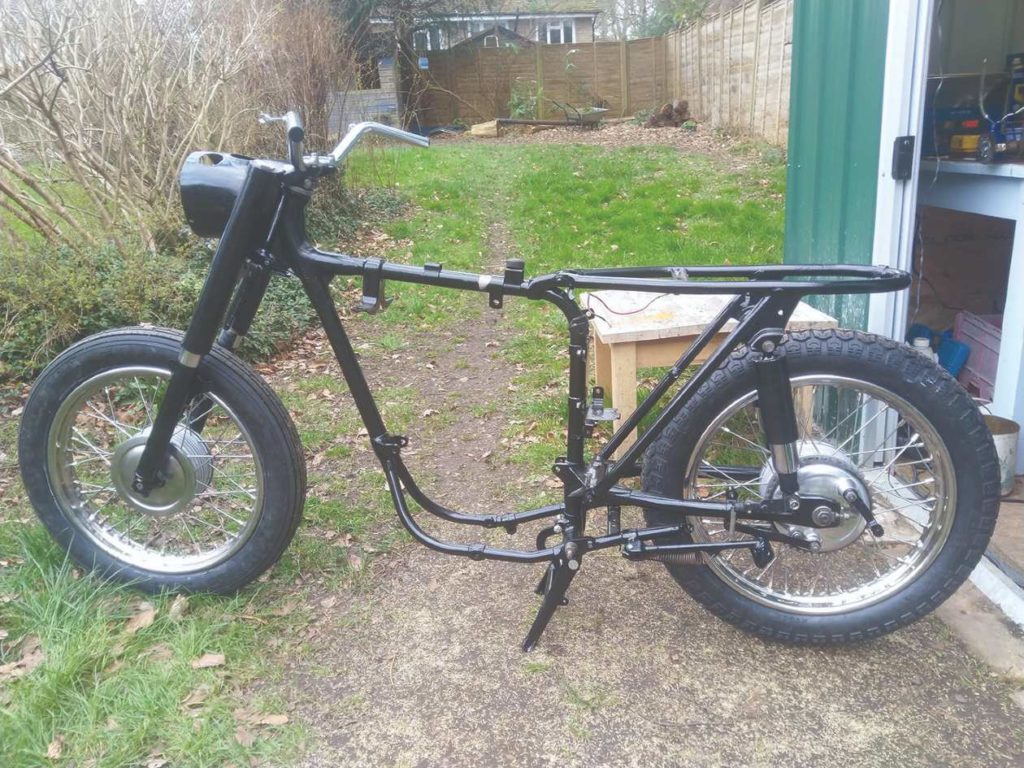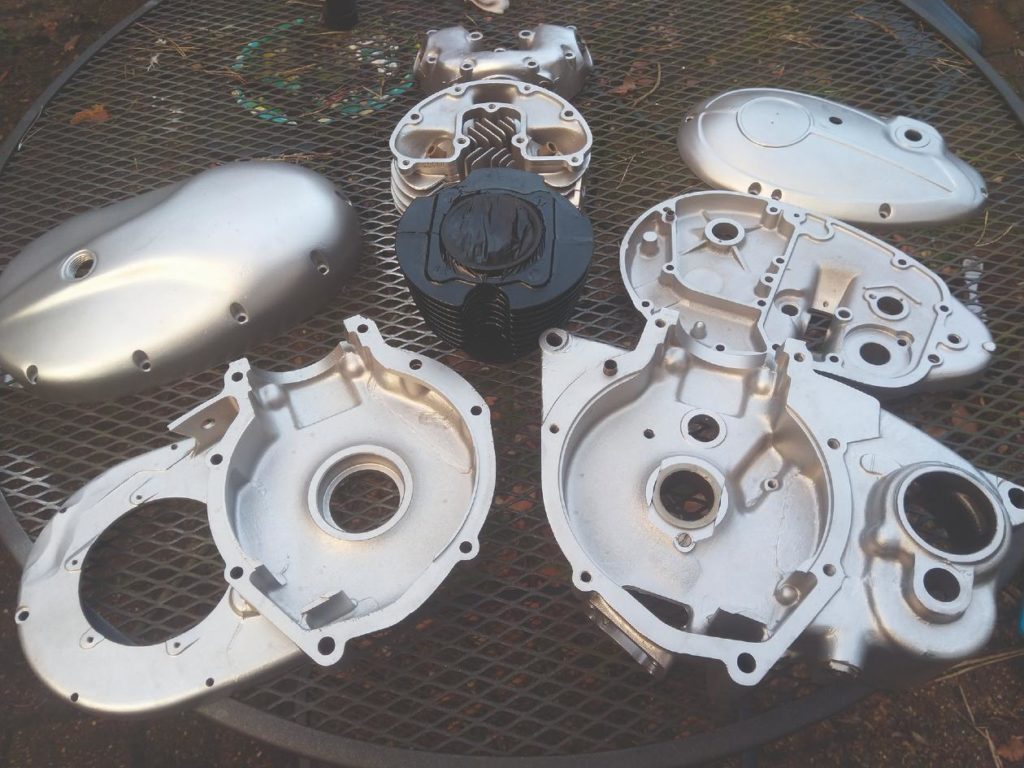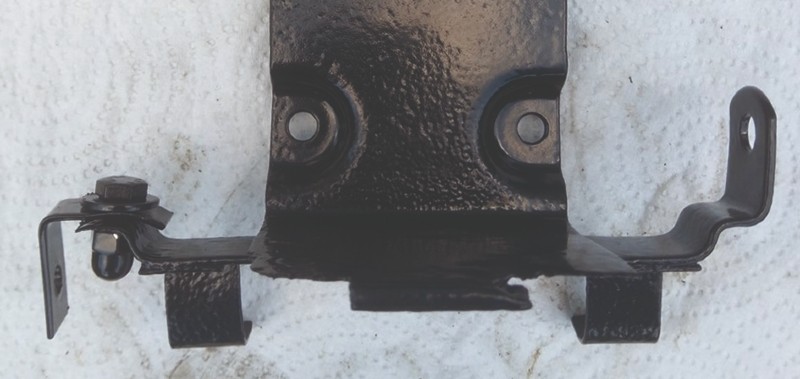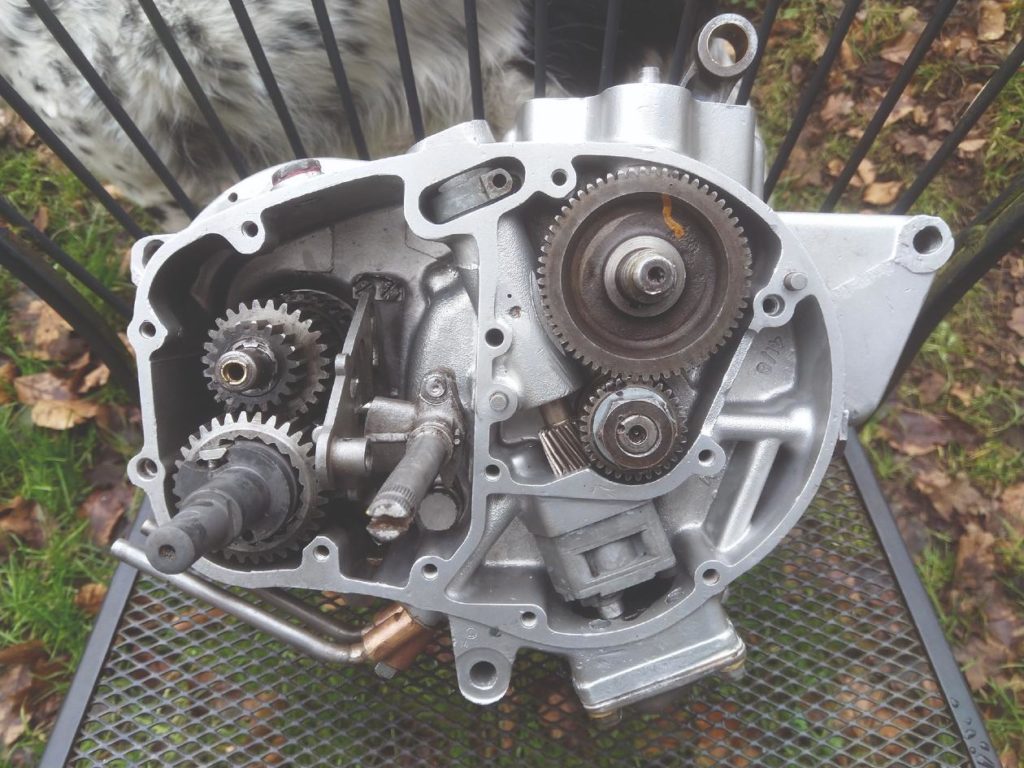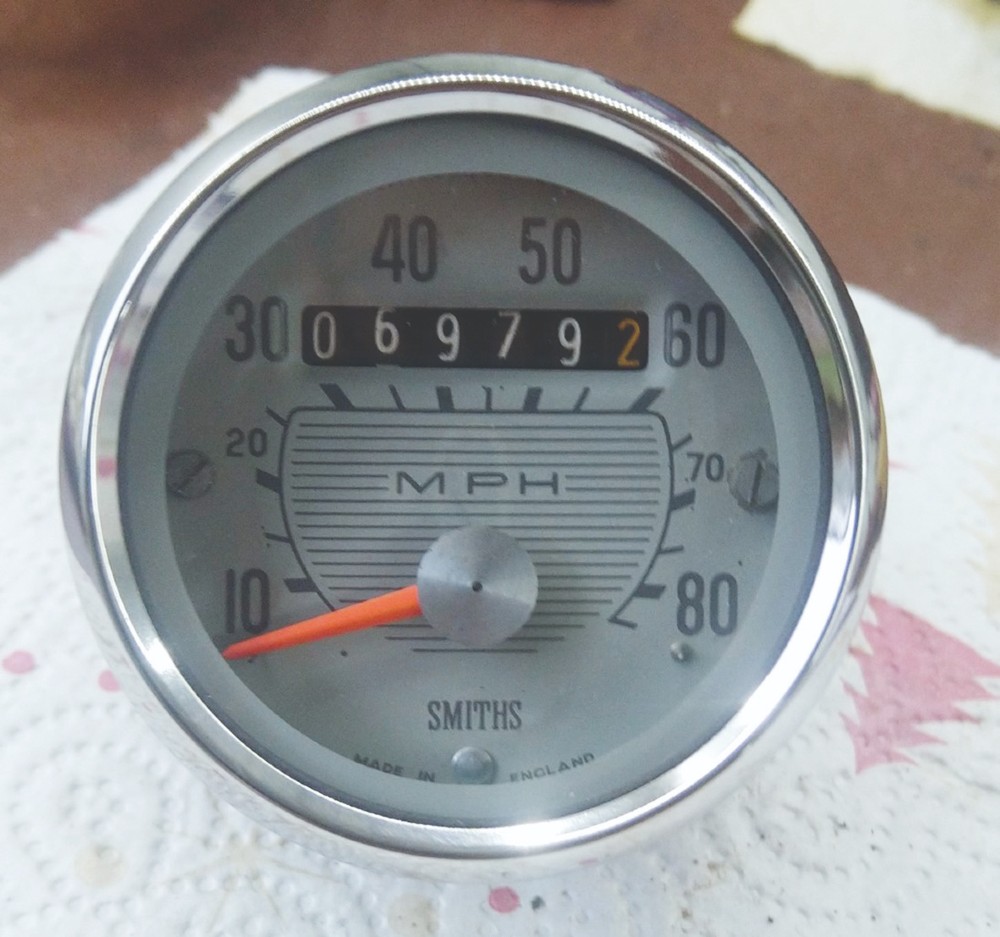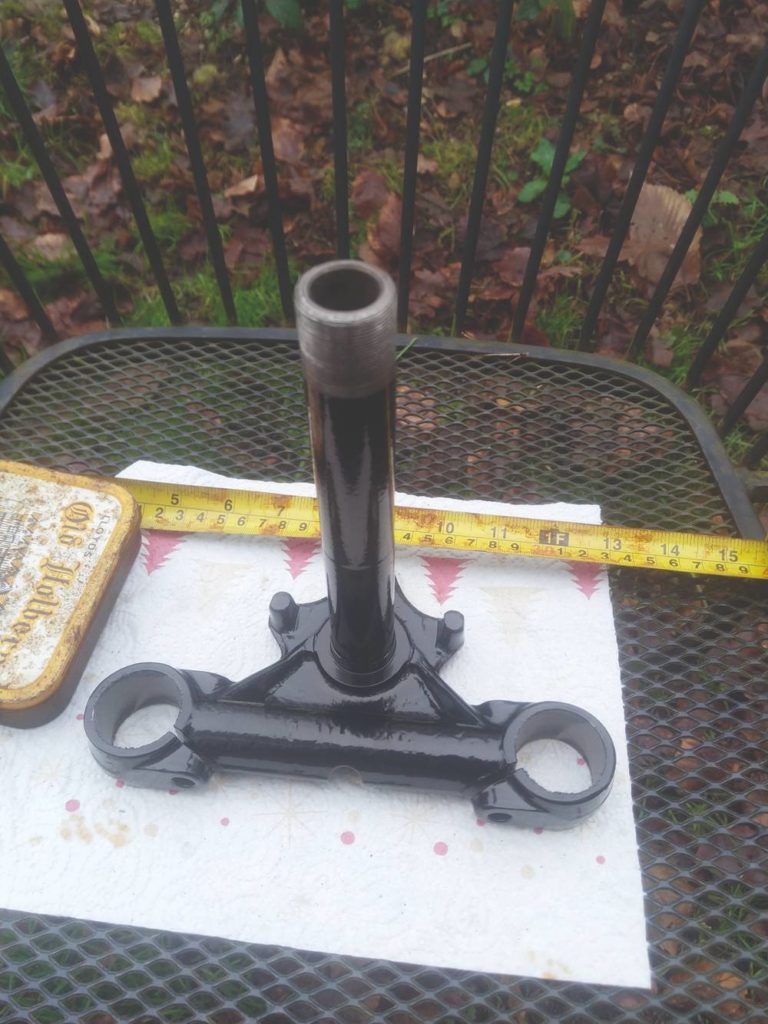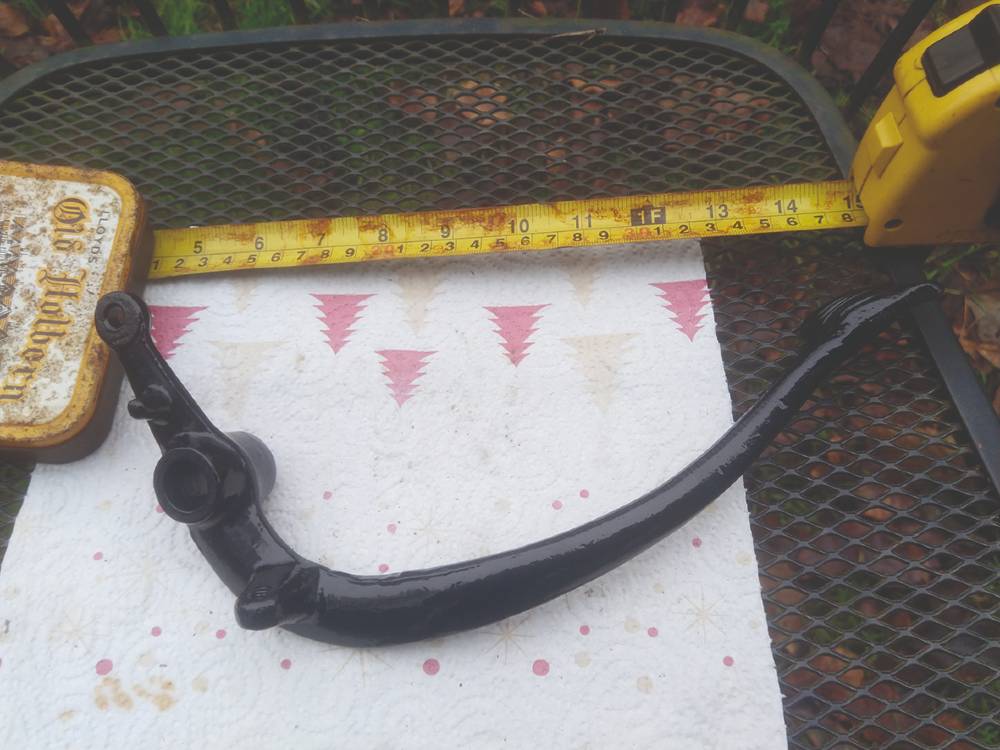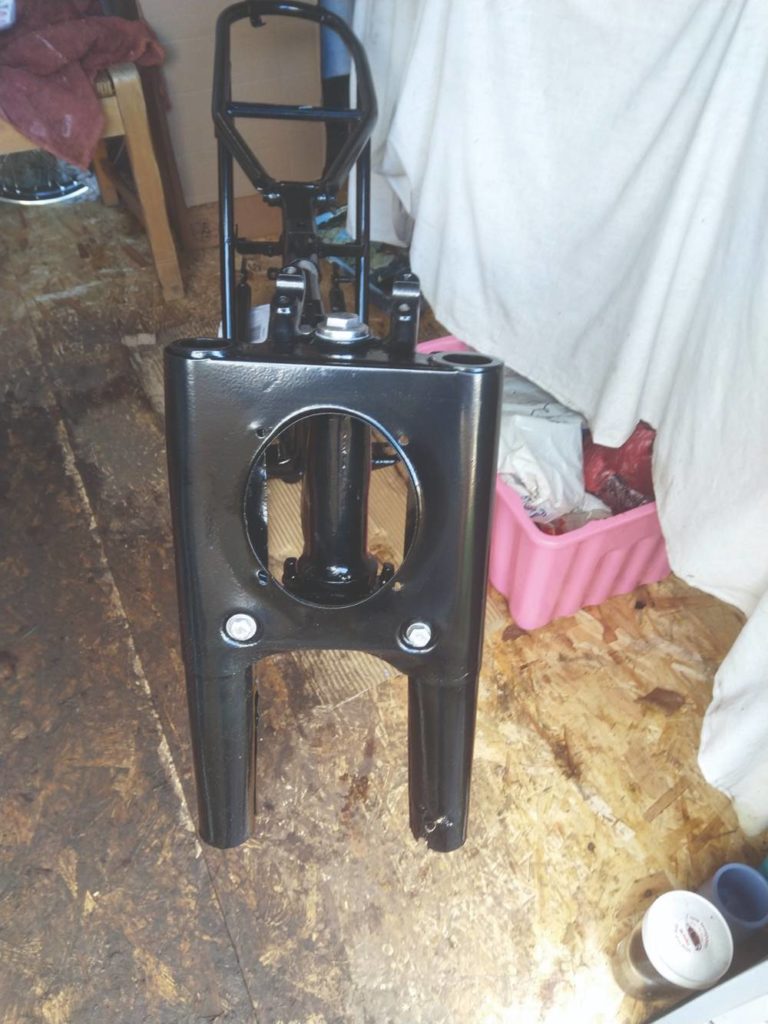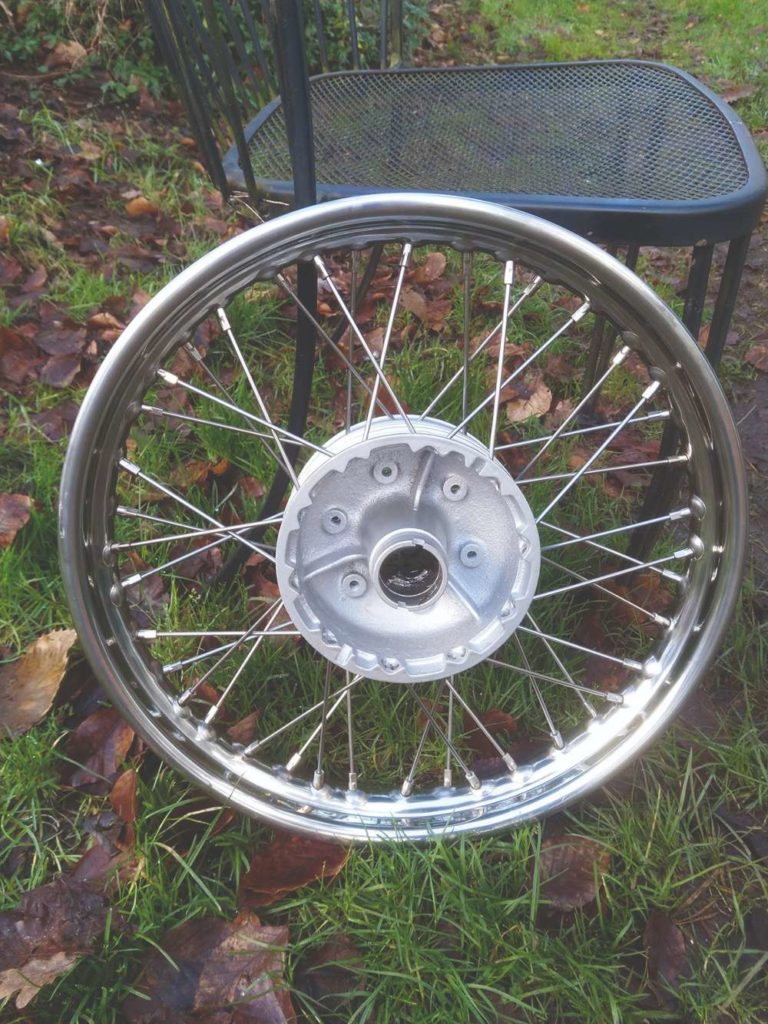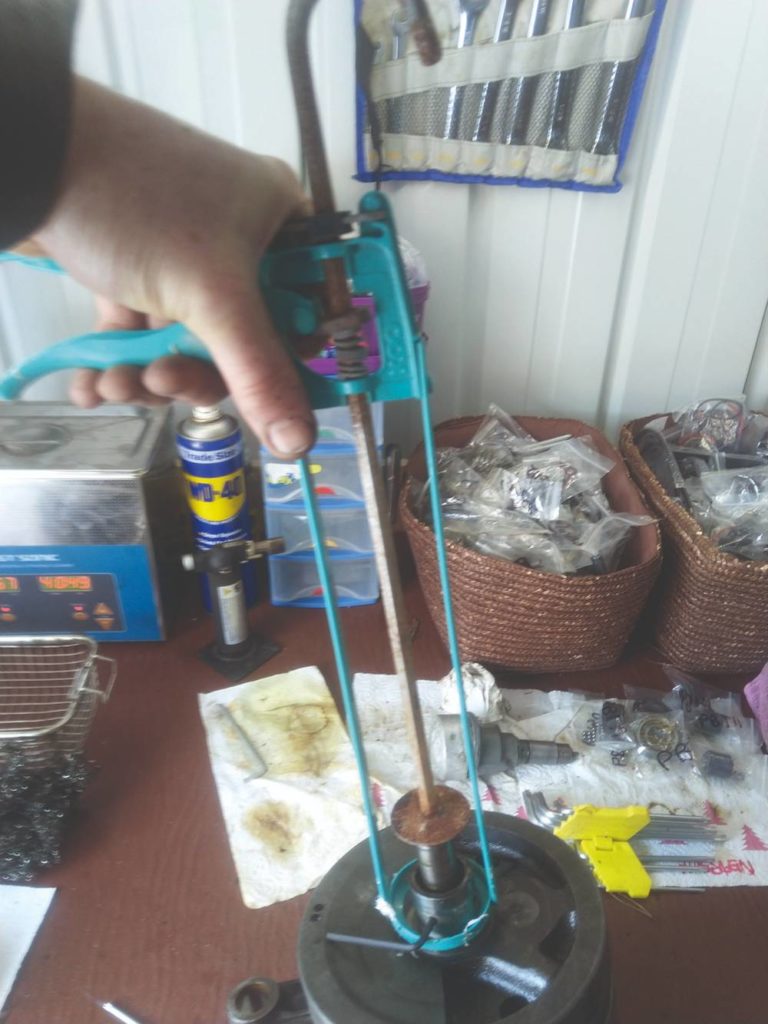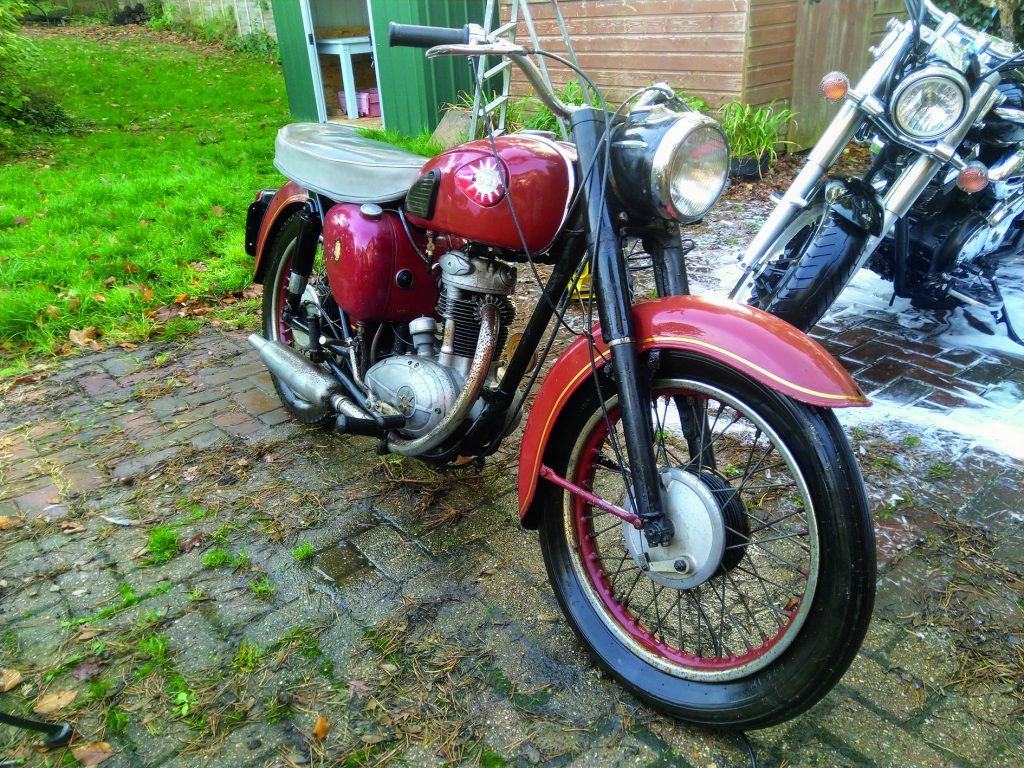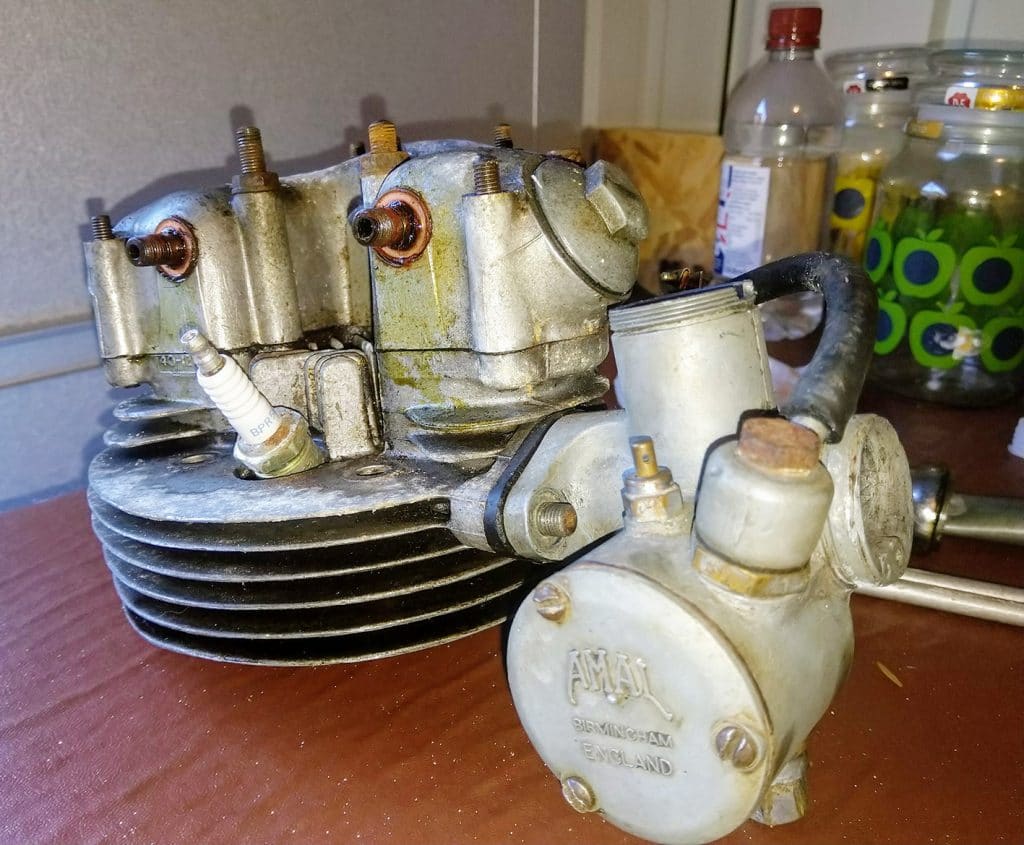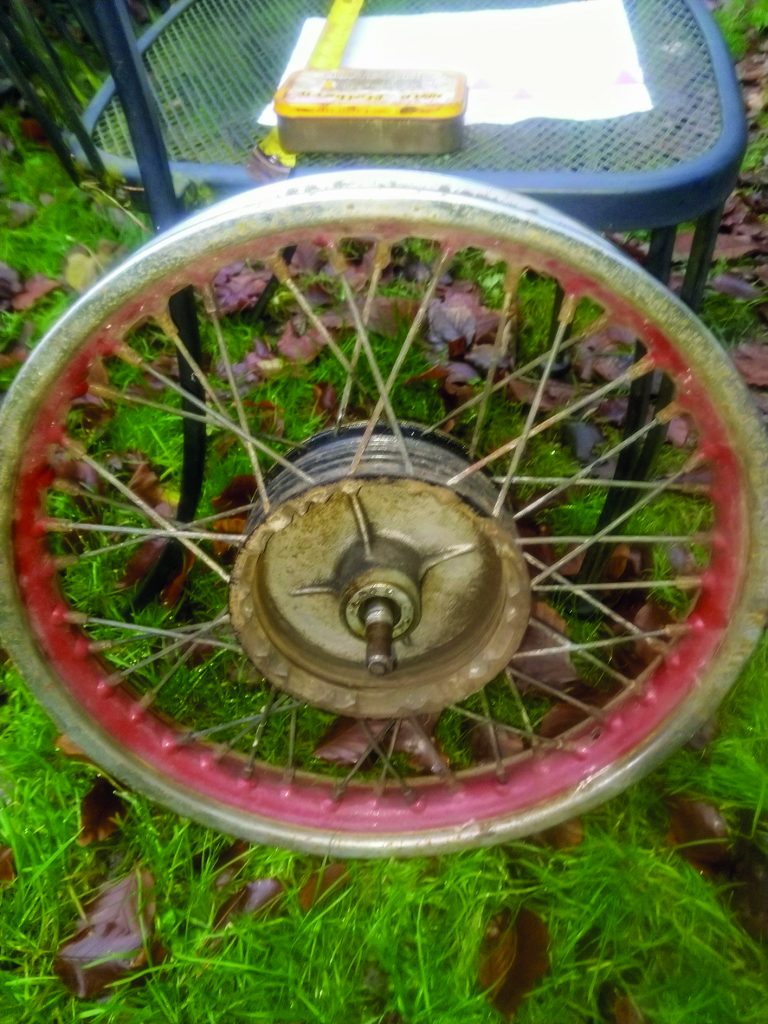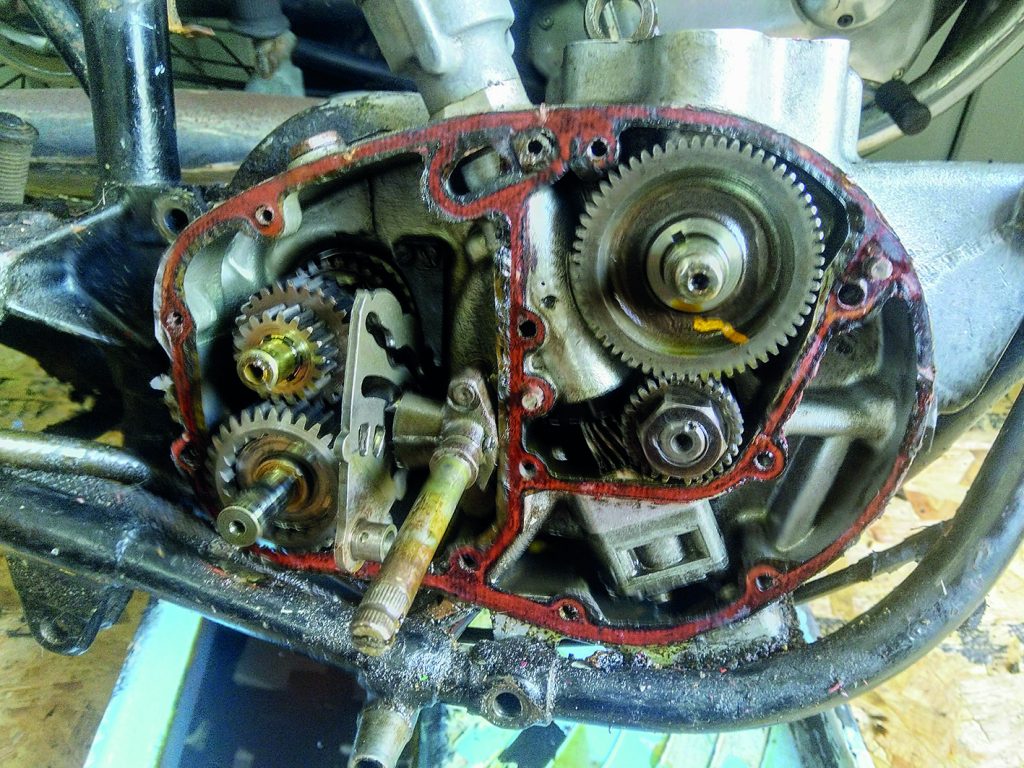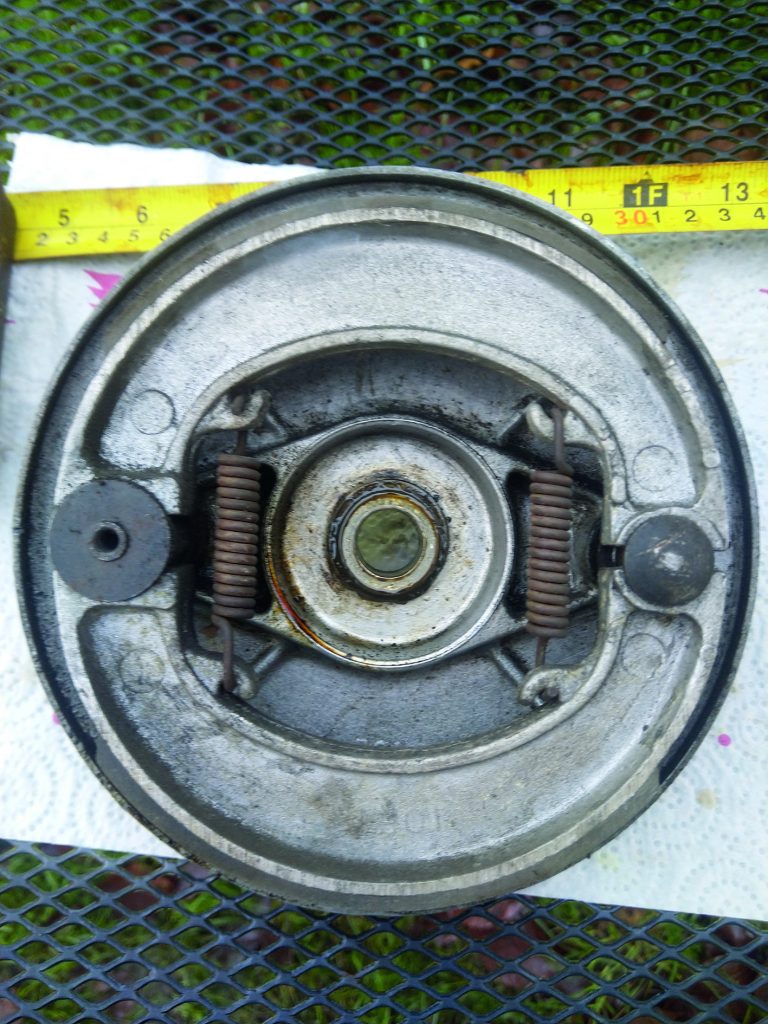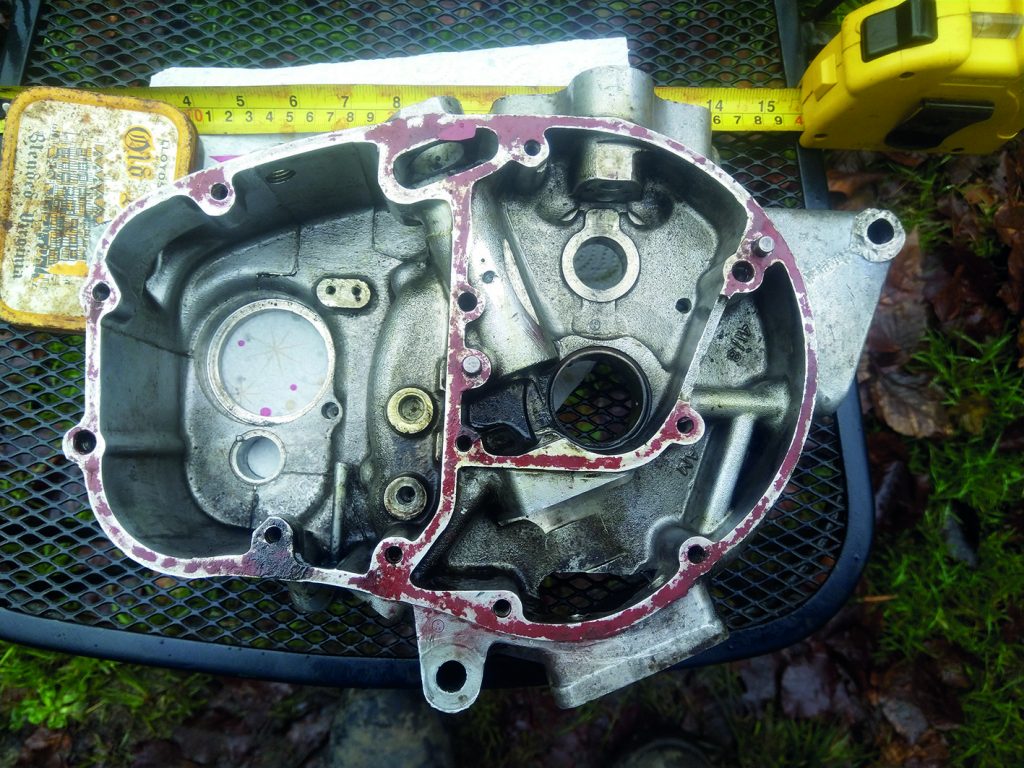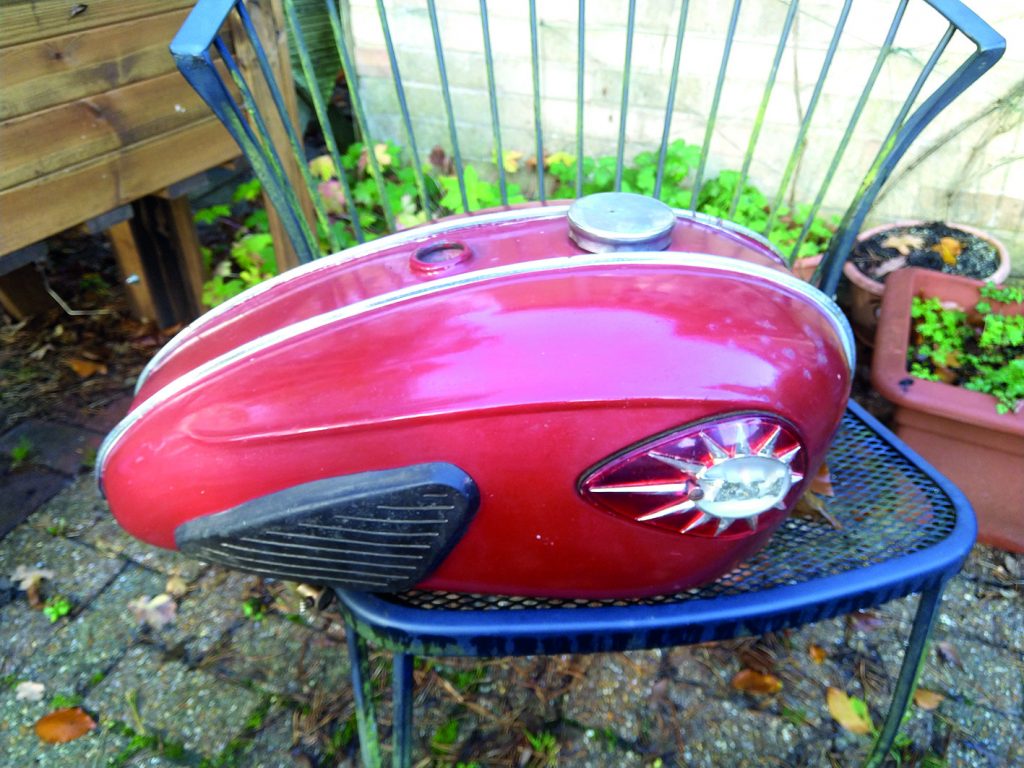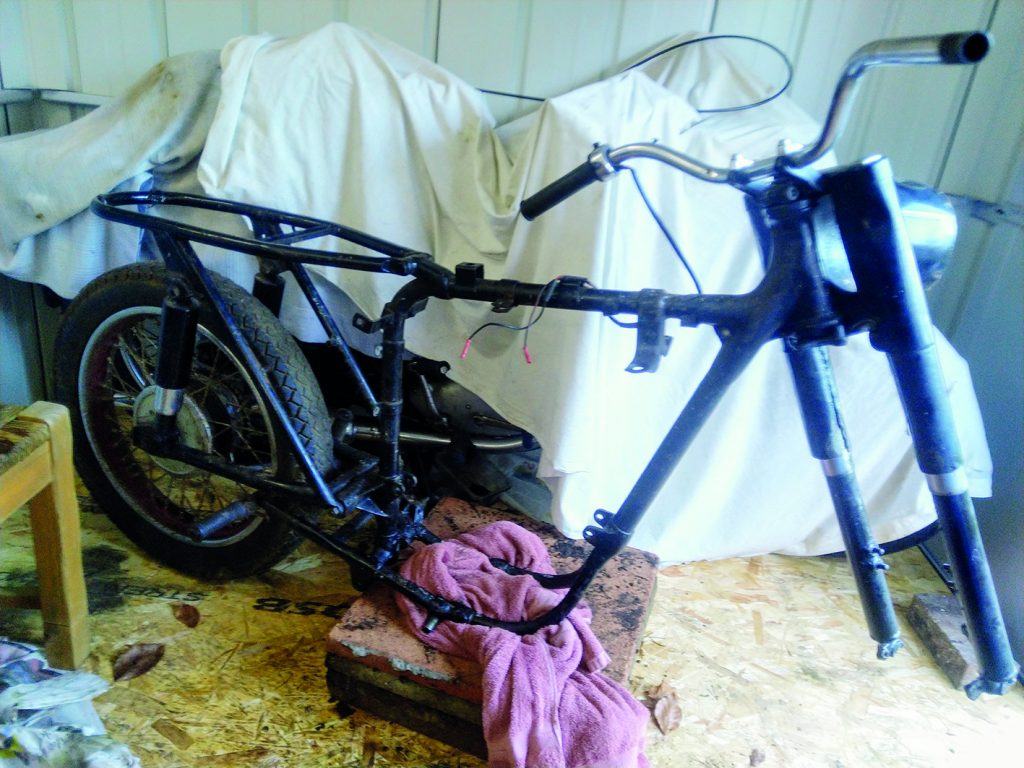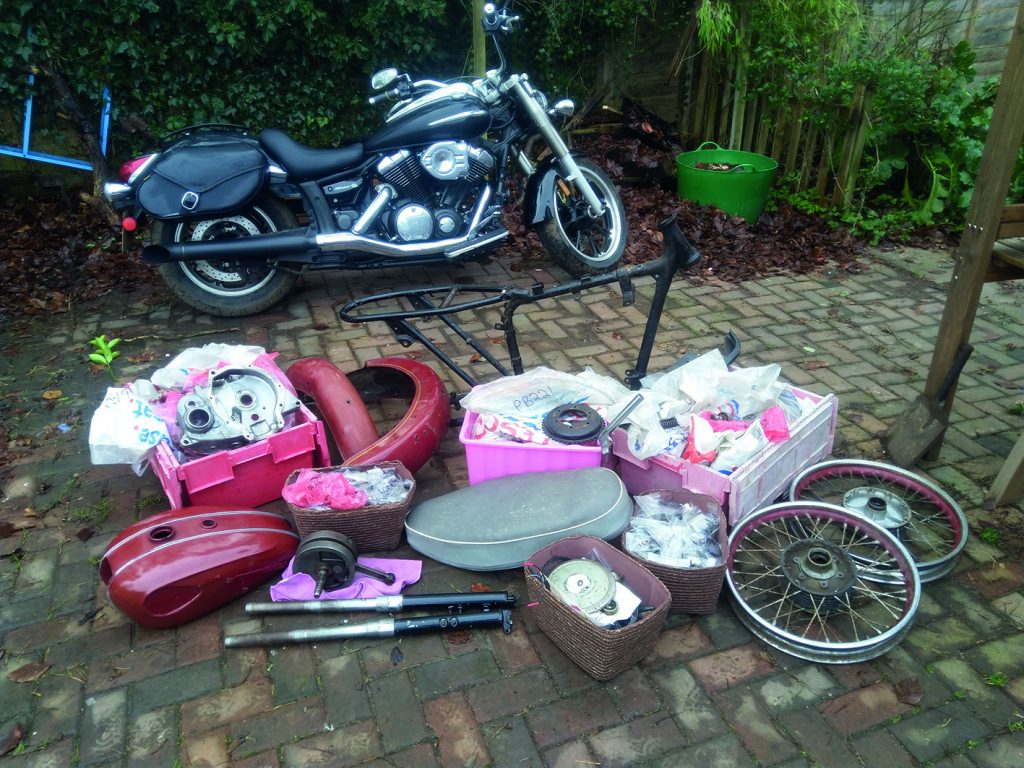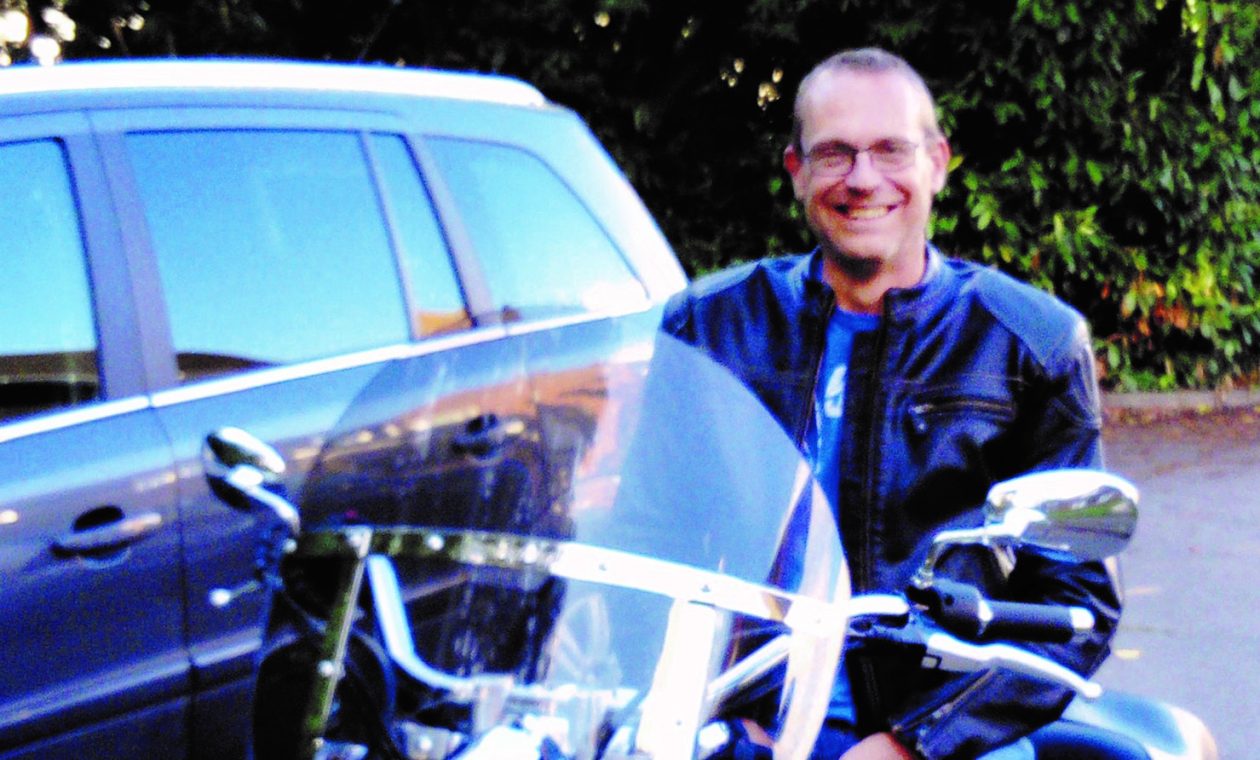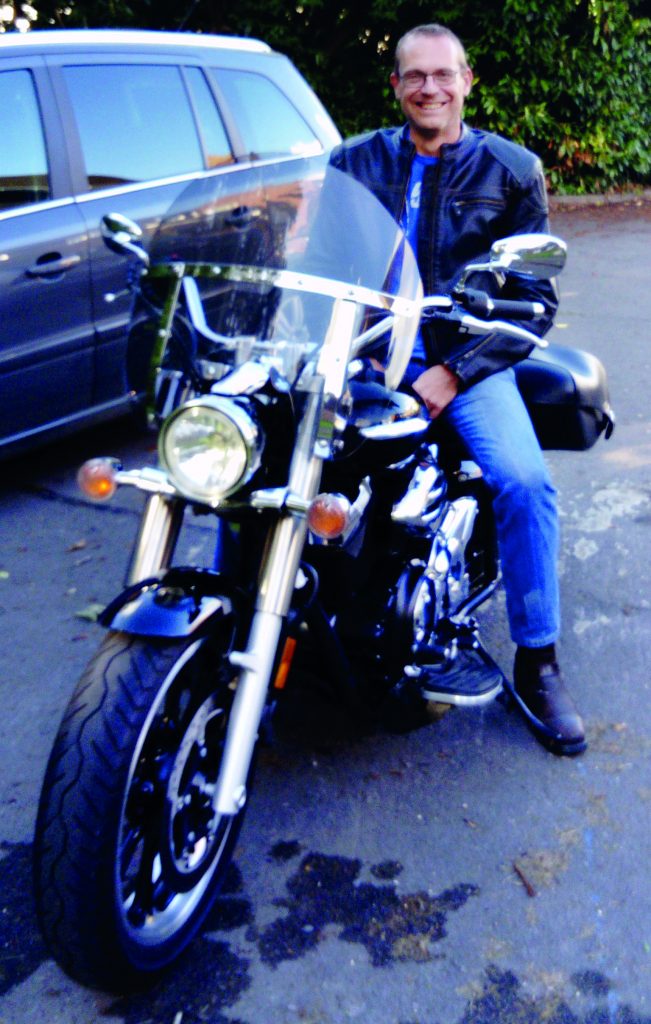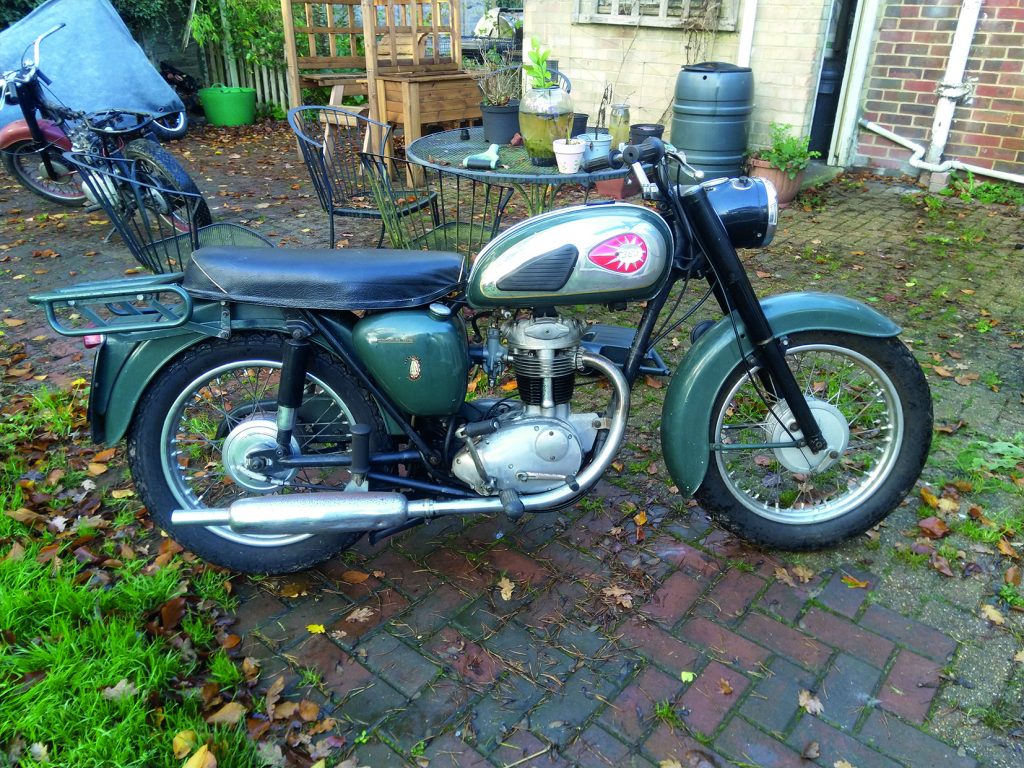Part Seven – Close and I’m having the cigar anyway!
I can’t believe that 3 months have gone by. Apologies for the lack of an article in the last 2 editions. Firstly, I was waiting for the tinware to come back, and then, I was ill with the plague – or a ‘viral infection’ as the doctor told me (the run-to condition when doctors haven’t got a clue what’s wrong with you – apologies to the doctors out there). It wasn’t Covid, but it was definitely some form of absolutely debilitating man-flu/plague/wrath of the Gods that had me flopped on the sofa for 2 weeks. This didn’t give me enough to write about in July and then the August edition was already full.
So, let’s catch up. The engine was back in the frame and I was waiting for the tinware to come back from Mike at Triple C. I had bits I could do whilst waiting for the tinware, but not much. Assuming there weren’t too many tasks that I had to take apart and re-do, that is.
The engine was nearly complete. I needed to do the valve clearances, the piston rods, the distributor and the carburettor. On the assumption that the valve clearances are correct, they were remarkably easy to do. The piston rods? I have heard of people buying an endoscope to do these before, and I can understand why. I don’t have one and it took about three hours of loosening the rockerbox, swearing, moving things around, swearing, resetting the rockerbox and trying again before it was eventually correct. People reading these articles must think my language is terrible. I can assure you it isn’t. Working on a classic bike just makes you swear! The two go together like Kirk and Spock.
The end can and the battery were ordered. Thinking of the electrics made me look closely at the point where the three wires from the stator connect to the loom. I was not convinced I had connected the three of them correctly. Research and advice soon yielded the information that these needed to be connected in a very specific and complicated (for me) way. And, yes, you’ve guessed it. The only way to check this was to take the primary chaincase cover off and remove the stator. I refer you to the penultimate sentence of the previous paragraph!
Anyway, it was a good job I had thought of this as upon removing the primary chaincase I discovered that I had it wired incorrectly. I proceeded to wire things up correctly, and a much better job was made of the soldering I’m pleased to report.
On to the distributor. Something else that I knew absolutely nothing about. I had no idea what it was even for. Research and advice from Mr. R time. I stripped the distributor and decided that the only thing that was needed was new advance springs which reduced costs significantly. They were bought and the distributor assembled. I’ll find out if I was correct when I try and start the bike.
On to setting the timing. I played around, getting a feel for it and the science behind this. I understand the basics of it now and got it to a place where I thought it was correct. Again, we’d find out when the engine was started.
I tightened up the Allen bolt to hold the distributor in the selected position……and the thread on the distributor clamp gave way! Nooooooo. This clamp is buried in the depths of the engine. The thread on it had been fine when I put it in place two or three months ago. This was panic inducing – potentially a major setback on up to three months’ worth of work. I hit the internet and my advice gurus to find out if there was a way around this. Unfortunately not, I needed to buy a new distributor clamp and replace the existing one in the middle of the engine. That was enough for that day. I’d had enough. I packed up, and went and sulked inside!
I had discovered another of the wonders of BSA design. The clamp that holds the distributor in position is in the depths of the engine next to the gears (an early part of the assembly), yet the retaining screw goes in through the outer timing cover – one of the last pieces to go in place. This makes distributor adjustments easy but causes problems if the clamp fails. As I said, I’d even checked the clamp before putting it in place, but obviously not thoroughly enough. So, to replace it I had to take off the newly-installed exhaust system, the pegs, the gear shift and kickstart pedals, remove the outer cover, dismantle the kickstart and gear change mechanisms, and remove the inner cover. Removing the inner cover obviously meant that one of my nemeses – the gearbox – came apart as well. I even had to loosen the engine in its frame mounts. There were very nearly tears at this point. To do all that assembly work on the engine had taken me weeks and weeks. I had to take apart 1/3 of the engine to get at that one part. Surely this could have been designed better?
On the positive side of things though, what had previously taken me weeks took me an afternoon this time. It brought home to me how much I’ve learned and what a difference it makes when you actually know something about what you are doing.
Of course, things couldn’t go completely smoothly though. That would be too easy. Upon re-re-re-re-re-assembly another thread went on the bottom engine mount and the kickstart cotter pin broke. Both fortunately external parts. I got the relevant parts from Dave (Mr. R) and quickly had the bike back to where it had been, but with an installed (and hopefully correctly adjusted) distributor.
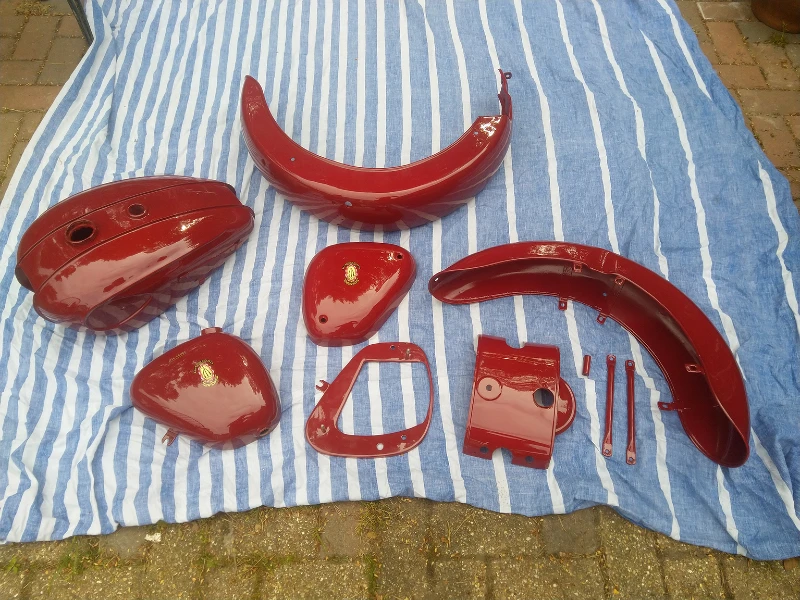
Finally, a long-anticipated day arrived – I got the tinware back from Mike at Triple C, and, to put it bluntly, it looked stunning. What an amazing job he did. The parts look absolutely gorgeous without even being attached to the rest of the bike. I was going to have to be really, really careful putting these on the bike. The last thing I wanted was a scratch.
I could now start putting these parts on, but before I did I wanted to dismantle and inspect the carburettor. To that end I took half a day to read about and carefully examine all the individual components. I’m glad I took the time to do the reading as I needed some new parts that I wouldn’t have got without the research, like a float bowl cover. A previous owner had over tightened this cover and distorted it. This would have most likely have led to a fuel leak in the future, not something you want really! Carburettor parts were ordered as well as numberplates. I also ordered something that would probably be very useful in the future, something that we couldn’t find when collecting the bike – keys!
While waiting for these parts I assembled the petrol tank and the rear lighting / numberplate holder on the rear mudguard. And, again, marvelled at how fantastic the tinware looked.
The numberplates arrived and were put on to their relevant mudguards (being an old fart I refuse to call them fenders!). I then quickly had the centre panel and the rear mudguard on the bike. The carburettor parts arrived, and the carb was assembled and attached to the bike in its initial setup. This will need to be altered later as modern fuels are different to the ones used at the time the instructions were written.
The next parts were the final ones and I was starting to get excited as the end of the restoration was in sight. Or was it fear at the thought of trying to start the bike after all this time, effort and learning (and swearing).
That was by-the-by though, as at this point I came down with a severe case of the plague, and lay moaning and groaning on the sofa for 10 days without the slightest bit of sympathy. What a heartless family I have! All I got were quips about man-flu and being a wimp.
Once recovered swift progress was made. The oil tank was fitted and connected, the remaining decal was done, and the front mudguard went on.
At this point I decided to wire up the battery and check all the electrics. This could be interesting! But overall I was pleased with my electrical efforts. I needed a new bulb for the rear light as the existing one was a 12V bulb and the bike is 6V. I also discovered that the ignition coil was dead. Like the distributor clamp I had checked this when it came off the bike and I thought it was okay, but it obviously wasn’t. Two other bulbs did not work, but I realised that this was because they weren’t earthed – I told you I knew nothing about wiring! That was soon sorted and once the new bulb and ignition coil arrived all the electrics worked correctly.
Only two things were left to go on the bike – the petrol tank and the seat (which I had resprayed underneath for protection).
They went on and that was it. The restoration part was complete.
Now it was time to get it running and roadworthy, so some oil went into the bike and I waited to see how much came straight back out. Three parts of the bike have oil, so I did this over three nights. This would allow me to trace any leaks. First in was the chaincase – no leaks. Next was the gearbox and, again, there were no leaks.
Finally, I needed to get oil into the oil tank and use the kickstart to move this oil all around the engine. 400 kicks or so later no oil was coming back into the oil tank. Some slight disassembly showed that oil was going all round the engine but simply not managing that final bit back to the tank and the scavenger to the rockerbox. There were no blockages. I finally decided that this was because the insides of these pipes were both very clean and very narrow. Due to the viscosity of the oil I thought that liquid to surface friction might be causing this. I removed the necessary pipes and forced oil through them. Once reattached this initial friction had been overcome and the oil came through nicely. Again, I left this overnight and there were no leaks.
Finally, fuel. I put a small amount of petrol into the tank and it came straight out again at the bottom! Some quick action with a cup collected most of this and then I had to do some cleaning up and let things evaporate. Investigation led me to something I had heard about but hadn’t twigged was applicable to my bike. I discovered a cork in the petrol tap under the tank which had dried out and shrunk over the years. Boiling it in a pan of water for half an hour and then leaving it to soak overnight in petrol and it was back to its proper dimensions. Petrol went back into the tank and the tap worked nicely. And the petrol came straight back out via the carb! This leaking from the carb was my first encounter with something that would become a recurring theme for me – I hadn’t tightened things up enough. In my fear of damaging parts by overtightening them I had gone to the other extreme. Carb parts tightened and no leaks. That meant that the next stage was…….first start!
All was set. I had the bike nicely positioned. Sharon and my daughter Emily, were there to watch and film things. I gave the bike its first kickstart – nothing. Many kicks later we switched off the video as I wasn’t getting anything, not even a hint of the engine starting. It was disheartening. It was at this point I remembered to turn on the ignition! 10 kicks later and the bike burst into life. Glorious, fantastic, amazing. The bike lived.
Okay I had to have the throttle fully open and oil seemed to be coming from everywhere, but the bike ran. What a feeling. And what a lovely sound.
I had expected the bike not to run for long. That was because I was going to have to do all the necessary alterations to the timing and the carb to get a sweet running engine. But I wasn’t expecting oil to come out so much, especially after it not leaking earlier. The pressure of the engine running was obviously forcing the oil out. Repeatedly starting the engine led me to three leaks – the primary chaincase cover, the sump plate and most worryingly the outer timing cover. This was worrying because there shouldn’t be sufficient oil in that area for a leak to occur.
New sump plate parts sorted that leak. I’d tried to get away with not replacing them and it hadn’t worked. The Primary Chaincase needed a new gasket due to the number of times it had been taken off and put back on.
The outer timing cover leak was traced to the camshaft breather. Initial thoughts and advice led me to the oil pump which might need lapping. So, I did this (for a first ever time) and managed to completely overdo it and killed the oil pump (I might have sworn at this point). A new oil pump was bought from Mr. R and all was reassembled, but still the leak was there. I also noticed that oil was coming out of a drain hole in the wrong direction. The pressure is too high in the engine. Investigations into this are continuing, it appears to have people stumped at the moment.
So, we’re at a kind of a weird place now. I just need to get this leak sorted then do the carb settings. Then the bike is on the road. But I’ve also just got Covid. Fortunately, I’m not too ill (mainly fatigue and breathlessness) as I’ve had both jabs but work on the bike has stopped. Realistically I need someone in the know to come and look at this leak for me before I can progress. And help me with the carb. I’ve reached the end of what I can learn by myself and need someone to teach me.
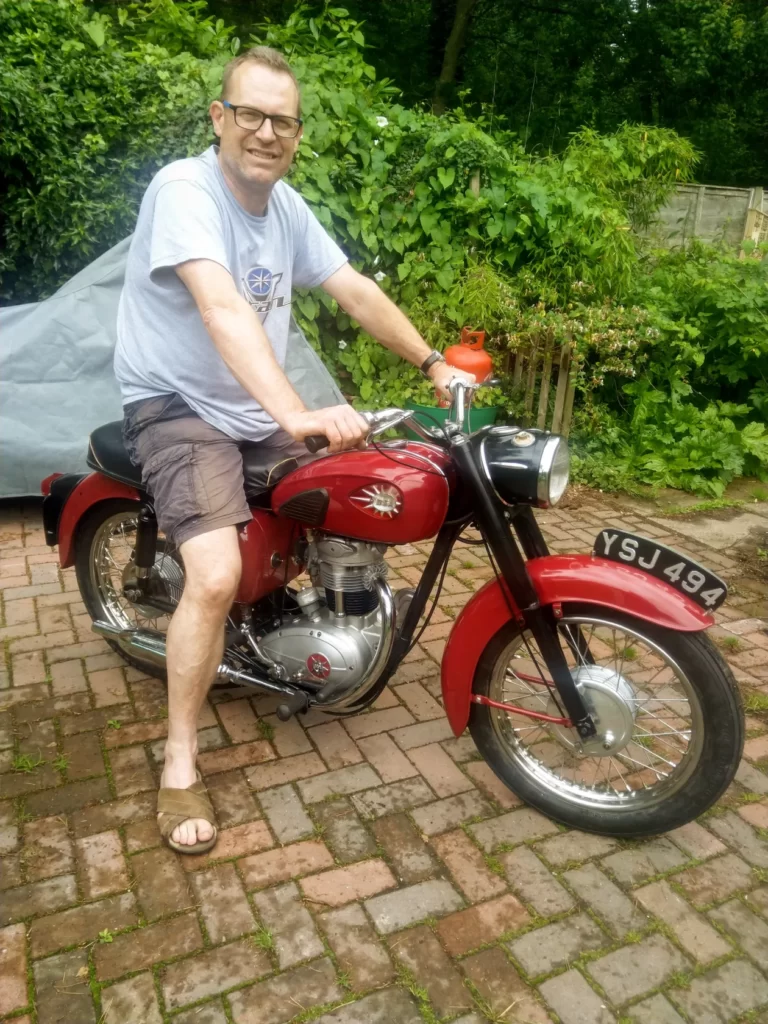
The restoration has been a journey. So many things – I’ve learned a stunning amount and done something I never thought I would be capable of, spent more on the bike than it’s actually worth (without having to even buy it), found great craftspeople who I would highly recommend, received great advice and even written articles about it. But the two most important things? I’ve made new friends (especially Dave and Lisa Smith, to whom I owe a big thank you) and I’ve had fun.
Getting supplies has been interesting. In our emails something Dave said brought home the dangers of buying modern pattern parts. To quote: “The original thread on the kickstart cotter is 9/32″ 26tpi cycle thread. Modern replacements are often 1/4″ or even 6mm!! Horrors. As producing that size is easier and cheaper.” So, you really need to be careful and buy from somewhere with a good reputation for supplying quality parts that are fit for purpose. At least a couple of hundred pounds has been spent on parts that didn’t fit. Again, to quote Dave: “the old boys in the past actually knew what they were doing and made decisions based on good engineering principles.” I would agree – except when it comes to chainguards and distributor clamps that is!
The bike isn’t roadworthy, but it runs, and I can keep the engine going. I could take it out tomorrow, but I wouldn’t get far at all, it would probably cause damage to the engine and it wouldn’t be safe – so that’s a no. I won’t have enough to write another article. All another article would say is that the leak is fixed, the carb is sorted and it’s on the road. There will always be other problems that need sorting as well, after all it’s a vintage motorbike! So, I’ll leave it here with a promise that I’ll send Salli a picture of me on the bike on the road as soon as I can. Thank you all for reading my ramblings, I hope you’ve enjoyed reading about it as much as I have enjoyed writing it. Stay shiny side up.
Jon Case
First published in Slipstream September 2021

